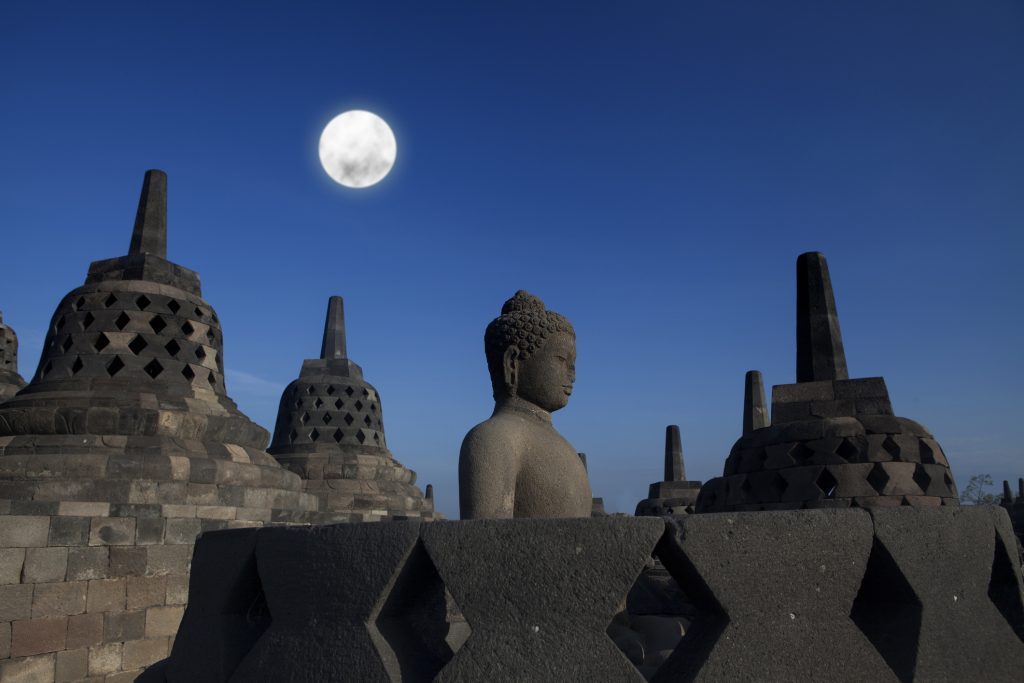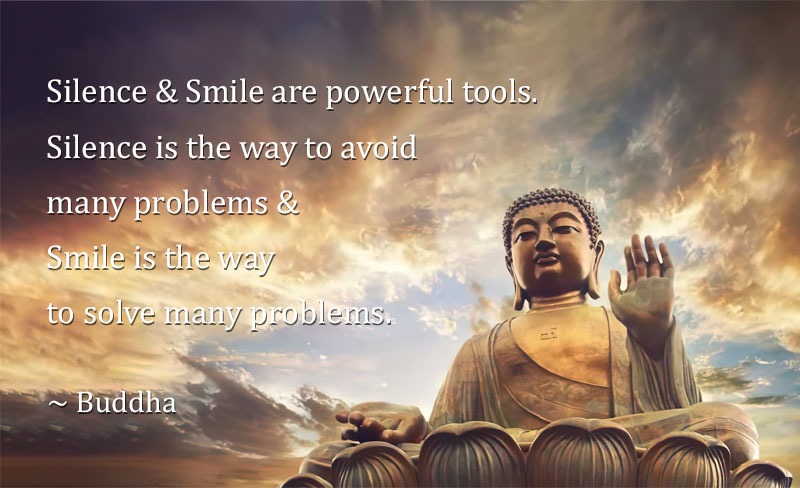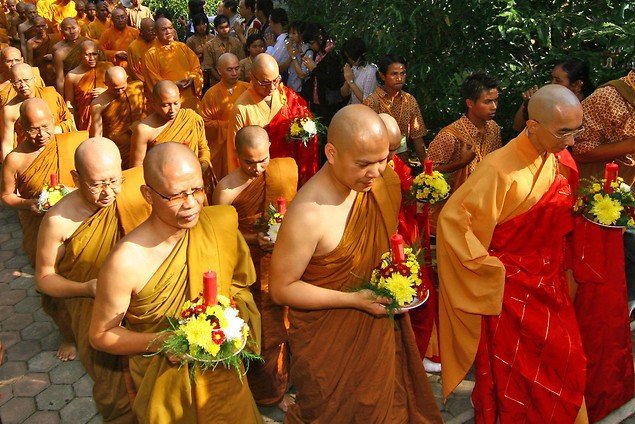Waisak or Vesak is a national holiday. The National Waisak Tri Sacred Celebration 2569 BE/2025 will fall on Monday (12/5/2025) at 23.55.59 WIB. Although only about 1% of Indonesia’s population is Buddhist the whole country joins in honoring this special day celebrated by Buddhists as the date of the birth, enlightenment and death of the Buddha.
This significant and traditional holy day is observed throughout Indonesia, where it is known as Waisak Day. At Borobudur, thousands of Buddhist monks will join to repeat mantras and meditate as they circuit the temple in a ritual called “Pradaksina”. This is a form of tribute to the temple. Monks celebrate the special day by bottling holy water (which symbolises humility) and transporting flames (which symbolize light and enlightenment) from location to location. The monks also take part in the “Pindapata” ritual, where they receive charity from the people of Indonesia. Waisak Day in Indonesia has been celebrated as a national public holiday every year since 1983.

Prince Siddhartha’s Journey to Becoming Buddha
The Buddha was born in the fifth or sixth century B.C. as Siddhartha Gautama, the crown prince of the kingdom of Kapilvatthu, in present-day Nepal. He married at the age of 16 and had one son. At the age of 29 he gave up his life of ease as a member of the ruling class, left his parents, wife and son to become a wandering ascetic. He was searching for the solution to the suffering of humanity and during this search for the Absolute Truth he received instruction from two renowned sages.
For six years he wandered in what are now the borderlands of India and Nepal, starving himself until his body was barely alive. Then, one day, he recognized the foolishness of what he had been doing. A short time later while he was resting beneath a banyan tree, a young woman called Sujata offered him a bowl of rice and milk and he accepted it thankfully. It was the night of the full moon in the month of Vaishakka, 528 B.C., the same full moon night as when Siddhartha had been born. Near dusk, he came to a wide-spreading Peepal tree. He sat down beneath the tree, facing east, and resolved not to leave that place until he found the insight he had been searching for.
 The evil god Mara came to test him causing a strong wind to blow and rain to drench him. Mara tempted him with visions of battles and dancing girls, caused him to suffer waves of desire, hunger and thirst, sleepiness, fear and doubt. Siddhartha reached down and touched the earth, asking it to bear witness to his sincerity. Mara was vanquished and as the full moon rose Siddhartha remained deep in meditation. He began to find the answers he sought as he was supported by the Ten Great Virtues: charity, morality, renunciation, wisdom, effort, patience, truth, determination, universal love and equanimity.
The evil god Mara came to test him causing a strong wind to blow and rain to drench him. Mara tempted him with visions of battles and dancing girls, caused him to suffer waves of desire, hunger and thirst, sleepiness, fear and doubt. Siddhartha reached down and touched the earth, asking it to bear witness to his sincerity. Mara was vanquished and as the full moon rose Siddhartha remained deep in meditation. He began to find the answers he sought as he was supported by the Ten Great Virtues: charity, morality, renunciation, wisdom, effort, patience, truth, determination, universal love and equanimity.
By sunrise he had attained enlightenment and become the Buddha, which in the local Magadhi language means “the Awakened One”. That pipal tree became known as the Mahabodhi tree, from the root word bodhi meaning “awakening”. The place later became known as Bodhgaya and is an important destination for pilgrimages by Buddhists from around the world.
Buddhism and the Spread of Buddhism
Four weeks after his enlightenment the Buddha started to teach the Four Noble Truths and the Noble Eightfold Path to achieve enlightenment. His teachings attracted many followers, both ordained and lay disciples, and monasteries were built in all the major centers of the surrounding area. The Buddha died at the age of 80. The three major events of his life, his birth, enlightenment and death, are commemorated in Buddhist communities around the world at Waisak.
Buddhism spread into many parts of Asia and was established in the Indonesian islands of Sumatra and Java by the sixth century. The port of Sriwijaya (present-day Palembang) in southern Sumatra became a center of learning in the seventh century. In contrast to India, Hinduism and Buddhism in Indonesia lived in harmony and by the ninth century syncretism was appearing. During the twelfth and thirteenth centuries the kingdom of Sriwijaya exerted an influence over all South-East Asia. In modern-day Indonesia Buddhism has the smallest number of adherents, mostly amongst the ethnic Chinese community. The Buddhist community maintains monasteries, temples and schools.
Waisak Commemoration in Indonesia
Every year at Waisak an impressive ceremony is held at Borobudur in Central Java. Borobudur is the largest and most magnificent Buddhist monument in the world and an unequaled example of Buddhist architecture. It was built in the eighth or ninth century by the Shailendra dynasty and depicts the Buddhist cosmos. The monument is located on a hilltop and comprises a series of seven gray andesite stone terraces carved with narrative bas-reliefs depicting daily life, with rings of stupas enclosing statues of Buddha on the upper three levels and a massive closed stupa at the top. The Great Stupa stands 40 meters above the ground. Viewed from the air, Borobudur is laid out in the shape of a mandala, a Buddhist symbol used for meditation and prayer. The walk around each level of the Borobudur symbolizes a pilgrim’s gradual ascent toward pure knowledge and enlightenment. Since the monument was rediscovered in the early 20th century it has undergone several restorations.
Nearby Mendut temple is an integral part of the Borobudur complex and is even older. It is located three kilometers from Borobudur and it is believed that pilgrims passed through this smaller temple complex before ascending the great Borobudur monument. Likewise at Waisak, a procession of approximately 25,000 Buddhist devotees commences at Mendut and proceeds slowly to Borobudur, the array of robes, banners, flowers, incense, colors and sounds providing a feast for all of the senses. Various sects or schools of Buddhism are united under the Council of Buddhist Communities (Walubi) that organizes the day’s events.
For the participants who gather to pay respect to the Buddha, the Waisak activities give strength to the spirit of all Buddhists. The Buddha developed himself to achieve perfect mindfulness by dedicating himself to liberate all beings from suffering. Waisak reminds followers of Buddha to strive to become the best kind of human by sincerely and selflessly doing good deeds.






